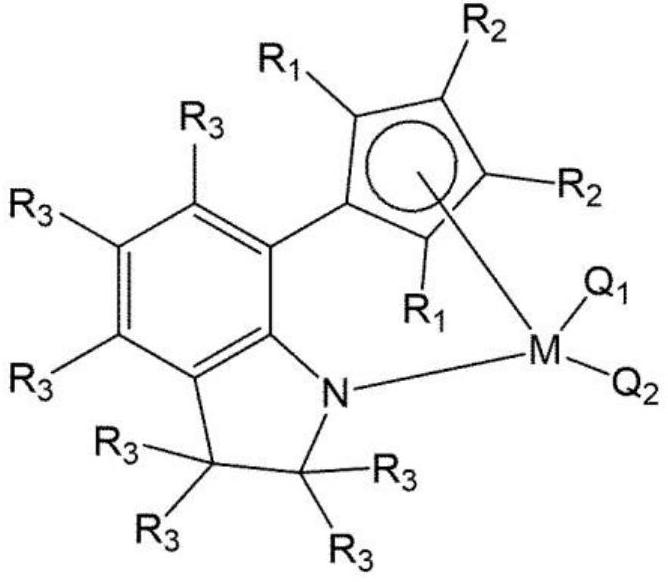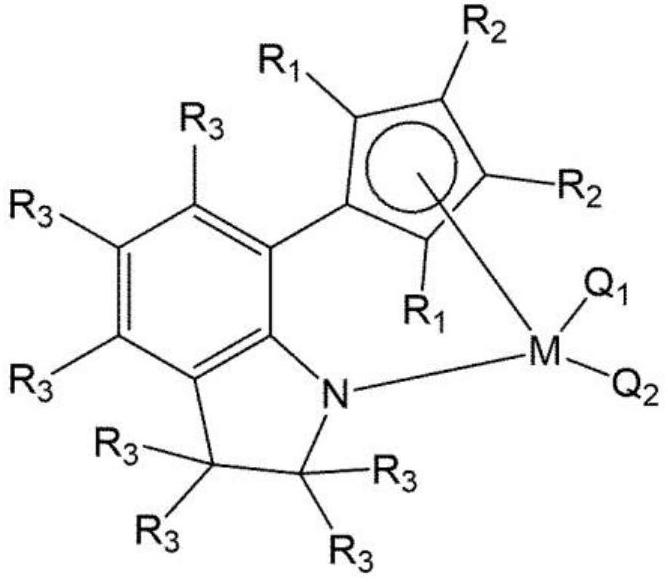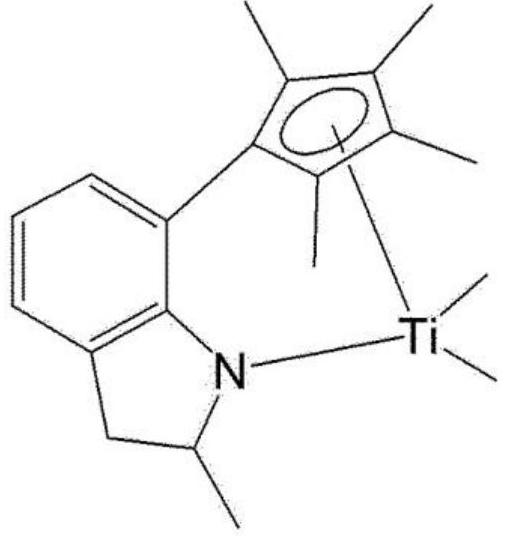Polypropylene-based composite material
A composite material, polypropylene-based technology, applied in the field of polypropylene-based composite materials, can solve problems such as impact resistance limitation, and achieve the effect of improving impact strength performance, uniform dispersion, and excellent miscibility
- Summary
- Abstract
- Description
- Claims
- Application Information
AI Technical Summary
Problems solved by technology
Method used
Image
Examples
preparation example Construction
[0112] As a first method, the catalyst composition can be prepared by a production method comprising the steps of obtaining a mixture by contacting a transition metal compound represented by Formula 1 with a compound represented by Formula 2 or Formula 3; and adding to the mixture A step of adding a compound represented by Formula 4.
[0113] In addition, as the second method, the catalyst composition may be prepared by a method of contacting a transition metal compound represented by Formula 1 with a compound represented by Formula 4.
[0114]In the first method of the preparation method of the catalyst composition, the molar ratio of the transition metal compound represented by Formula 1 to the transition metal compound represented by Formula 2 / the compound represented by Formula 2 or Formula 3 may be 1 / 5,000 to 1 / 2, specifically 1 / 1,000 to 1 / 10, more specifically 1 / 500 to 1 / 20. If the molar ratio of the transition metal compound represented by formula 1 / the compound repre...
preparation example 1
[0128] Catalyst Preparation Example 1: Preparation of Transition Metal Compound A
[0129]
[0130] (1) Preparation of 8-(2,3,4,5-tetramethyl-1,3-cyclopentadienyl)-1,2,3,4-tetrahydroquinoline
[0131] (i) Preparation of lithium carbamate
[0132] 1,2,3,4-Tetrahydroquinoline (13.08 g, 98.24 mmol) and diethyl ether (150 ml) were placed in a Schlank flask. The Schlenk flask was immersed in a -78 °C cryogenic bath obtained by dry ice and acetone and stirred for 30 min. Then, n-BuLi (39.9 mL, 2.5M, 98.24 mmol) was injected via syringe under nitrogen atmosphere, and a pale yellow slurry was formed. Then, the flask was stirred for 2 hours, and the temperature of the flask was raised to room temperature while removing generated butane gas. Immerse the flask again in a cryogenic bath at -78 °C to lower the temperature, and inject CO 2 gas. By injecting carbon dioxide gas, the slurry disappeared into a clear solution. The flask was connected to a bubbler and the temperature was...
preparation example 2
[0148] Catalyst Preparation Example 2: Preparation of Transition Metal Compound B
[0149]
[0150] (1) Preparation of 2-methyl-7-(2,3,4,5-tetramethyl-1,3-cyclopentadienyl)indoline
[0151] 2-Methyl-7-(2,3,4,5-tetramethyl-1,3-cyclopentadienyl)indoline was prepared by the same method as (1) of Preparation Example 1, the difference That is, in (1) of Preparation Example 1, 2-methylindoline was used instead of 1,2,3,4-tetrahydroquinoline. The yield was 19%.
[0152] 1 H NMR (C 6 D. 6 ): δ6.97(d, J=7.2Hz, 1H, CH), δ6.78(d, J=8Hz, 1H, CH), δ6.67(t, J=7.4Hz, 1H, CH), δ3 .94(m, 1H, quinoline-CH), δ3.51(br s, 1H, NH), δ3.24-3.08(m, 2H, quinoline-CH 2 ,Cp-CH), δ2.65(m,1H,quinoline-CH 2 ), δ1.89(s,3H,Cp-CH 3 ), δ1.84(s,3H,Cp-CH 3 ), δ1.82(s,3H,Cp-CH 3 ), δ1.13 (d, J=6Hz, 3H, quinoline-CH 3 ), δ0.93(3H,Cp-CH 3 )ppm.
[0153] (2) Preparation of [(2-methylindoline-7-yl)tetramethylcyclopentadienyl-η5,κ-N]dimethyltitanium
[0154] (i) Obtain the dilithium salt compound (comp...
PUM
| Property | Measurement | Unit |
|---|---|---|
| particle size | aaaaa | aaaaa |
| melting point | aaaaa | aaaaa |
| melting point | aaaaa | aaaaa |
Abstract
Description
Claims
Application Information
 Login to View More
Login to View More - R&D
- Intellectual Property
- Life Sciences
- Materials
- Tech Scout
- Unparalleled Data Quality
- Higher Quality Content
- 60% Fewer Hallucinations
Browse by: Latest US Patents, China's latest patents, Technical Efficacy Thesaurus, Application Domain, Technology Topic, Popular Technical Reports.
© 2025 PatSnap. All rights reserved.Legal|Privacy policy|Modern Slavery Act Transparency Statement|Sitemap|About US| Contact US: help@patsnap.com



